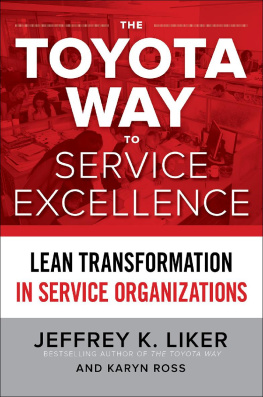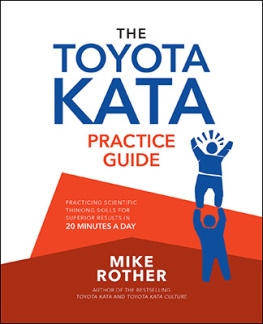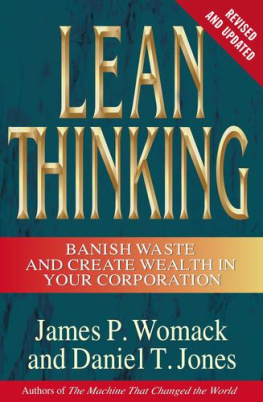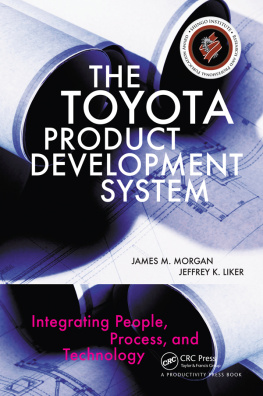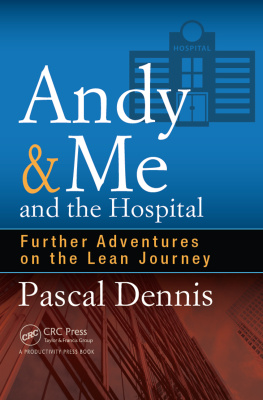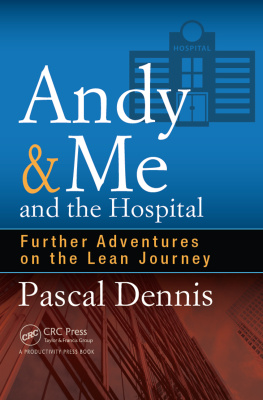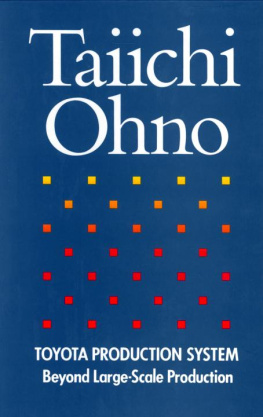Copyright 2015 by Takehiko Harada. All rights reserved. Except as permitted under the United States Copyright Act of 1976, no part of this publication may be reproduced or distributed in any form or by any means, or stored in a data base or retrieval system, without the prior written permission of the publisher.
ISBN: 978-0-07-184974-6
MHID: 0-07-184974-2
The material in this eBook also appears in the print version of this title: ISBN: 978-0-07-184973-9, MHID: 0-07-184973-4.
eBook conversion by codeMantra
Version 1.0
All trademarks are trademarks of their respective owners. Rather than put a trademark symbol after every occurrence of a trademarked name, we use names in an editorial fashion only, and to the benefit of the trademark owner, with no intention of infringement of the trademark. Where such designations appear in this book, they have been printed with initial caps.
McGraw-Hill Education eBooks are available at special quantity discounts to use as premiums and sales promotions or for use in corporate training programs. To contact a representative, please visit the Contact Us page at www.mhprofessional.com.
TERMS OF USE
This is a copyrighted work and McGraw-Hill Education and its licensors reserve all rights in and to the work. Use of this work is subject to these terms. Except as permitted under the Copyright Act of 1976 and the right to store and retrieve one copy of the work, you may not decompile, disassemble, reverse engineer, reproduce, modify, create derivative works based upon, transmit, distribute, disseminate, sell, publish or sublicense the work or any part of it without McGraw-Hill Educations prior consent. You may use the work for your own noncommercial and personal use; any other use of the work is strictly prohibited. Your right to use the work may be terminated if you fail to comply with these terms.
THE WORK IS PROVIDED AS IS. McGRAW-HILL EDUCATION AND ITS LICENSORS MAKE NO GUARANTEES OR WARRANTIES AS TO THE ACCURACY, ADEQUACY OR COMPLETENESS OF OR RESULTS TO BE OBTAINED FROM USING THE WORK, INCLUDING ANY INFORMATION THAT CAN BE ACCESSED THROUGH THE WORK VIA HYPERLINK OR OTHERWISE, AND EXPRESSLY DISCLAIM ANY WARRANTY, EXPRESS OR IMPLIED, INCLUDING BUT NOT LIMITED TO IMPLIED WARRANTIES OF MERCHANTABILITY OR FITNESS FOR A PARTICULAR PURPOSE. McGraw-Hill Education and its licensors do not warrant or guarantee that the functions contained in the work will meet your requirements or that its operation will be uninterrupted or error free. Neither McGraw-Hill Education nor its licensors shall be liable to you or anyone else for any inaccuracy, error or omission, regardless of cause, in the work or for any damages resulting therefrom. McGraw-Hill Education has no responsibility for the content of any information accessed through the work. Under no circumstances shall McGraw-Hill Education and/or its licensors be liable for any indirect, incidental, special, punitive, consequential or similar damages that result from the use of or inability to use the work, even if any of them has been advised of the possibility of such damages. This limitation of liability shall apply to any claim or cause whatsoever whether such claim or cause arises in contract, tort or otherwise.

CONTENTS

TRANSLATORS NOTES AND INSIGHTS
M any times managers ask, How can we sustain Lean? This book points out the need to adopt a management mindset throughout the organization, starting with management. It provides anecdotes and practical steps to ensure that both the mindset and the purpose behind well-known techniques associated with the Toyota Production System (TPS) are understood and considered during implementation.
A number of books have been written about Ohno. Anecdotes such as being told to stand in one spot, fast changeovers, and the like are plentiful. His style of management could be considered dictatorial and bombastic, but beyond the mannerisms, there are basic, overarching principles that we find very useful.
By his strength of character, Ohno demonstrates the role that the leader must play at every level of management. Integrity, example/coaching, engagement at the floor level, risk taking and willingness to experiment to find better ways, and never being defensive about confronting problems are characteristics that can be found throughout the book. Neither providing solutions nor telling people what to do was his mode of operation. But he was never shy about confronting reality. He demonstrated that the people at the grassroots level have the capability to arrive at solutions.
This book was originally written for a Japanese audience, so it is written from a Japanese viewpoint. I have translated it the way it was written to keep the integrity of the book, and I have been careful not to edit things into or out of the original text. However, on occasion, I have added my own comments or clarifications as a Lean consultant who is living in Japan and has worked in many other countries as well. Hopefully, the comments will help drive home the truth that is written in this book, a truth that we can all use.
When I was first approached to translate this book, it started out as more of doing a favor for a friend. Once I met Mr. Harada, however, I knew that I wanted to dig deeper into what he was trying to say. Conversations with a Toyota manager that included I hate stopwatches and Let them have as much inventory as they want were intriguing, to say the least. As I started translating the book and started the e-mail flow between Takehiko and myself on concepts or the historical background to what he was saying, many things started to make sense. I realized that I had in fact picked up fake Lean concepts that I had had a problem with emotionally, but that I had never really had them articulated the way Harada explained them.
Looking back, I have to say that translating this book has been a sheer pleasure. The amount of time I spent on it, along with my many meetings and conversations with Mr. Harada, have truly been educational, and I have so appreciated Mr. Haradas willingness to spend his time with me and to discuss in detail the stories behind the episodes and the principles embedded in them.
Some of the areas that I had problems with were phrases like, In the West, they dont care, or, In Japan, we think differently. While I translated what was written word for word, it was sad to see that our Western culture is seen as selfish and money before peopleboth concepts that are viewed with contempt in Japan. This, unfortunately, looks more and more true for those companies that are doing Lean just for the numbers. The phrase profit comes after focusing on flow, which can be translated as profit is a leftover after pursuing flow, really has deep meaning.
Personally, one of the greatest gems or confirmations for me in translating this book has been the absolute confirmation that biblical values are totally in line with what makes logical sense in creating a vibrant workplace. I had always known this intrinsically, but now I had authoritative backing. I think readers who grew up with values such as do the right thing or love your neighbor as yourself, but then find that the workplace they are thrust into is not living these values, can take heart. It is possible.


